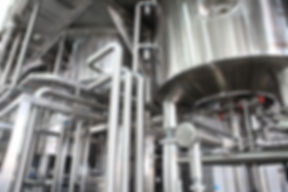
TECHNOLOGIES
We are working with industry and government to assess and demonstrate the viability of numerous technologies for improving the energy productivity across the manufacturing supply chain in Australia and to aid their demonstration and implementation.
The technologies and measures with the current greatest potential to improve energy productivity are listed below.
Decarbonising process heating is a major challenge as we move towards net zero targets. While they may not yet be able to provide the highest of heat needed, industrial heat pumps represent a viable, highly efficient solution for providing low-carbon heating and cooling for a range of industrial and commercial applications.
A2EP has developed a number of reports, webinars and case studies showing the potential of heat pumps for decarbonising heating and cooling.
COMPRESSED AIR SYSTEMS
Compressed air systems are sometimes referred to as ‘the fourth utility’ after electricity, gas and water. They are widely used in industry for activities such as drying, assembly, blow-moulding and paint-spraying.
Many existing systems are extremely inefficient, with 80% to 90% losses, making compressed air a major focus for energy productivity improvements. A2EP has conducted extensive research and analysis on compressed air efficiency opportunities and alternatives.
METERING & MONITORING

So much energy optimisation and energy productivity improvement can be achieved through the implementation of smart, integrated energy metering and measurement systems.
Case studies:
YIELD IMPROVEMENTS

Seeking yield improvements from waste recovery and by-product utilisation can not only create a cleaner source of energy, it stands to solve various waste issues and help organisations close the loop as we move towards a circular economy.
Case studies:
ENERGY RECOVERY

Equipment for energy recovery gives excellent return on investment and significantly improves energy productivity. Right now in Australia there is more than 5GW of heat recovery equipment installed across many sectors across Australia, including alumina, crude oil refining, chemicals, non-ferrous metals, sugar, dairy, beverage, HVAC and refrigeration systems. However, there is potential to add another 1-2GW of heat recovery capacity.
Watch A2EP's webinar on energy recovery in industrial applications.
FACILITY INTEGRATION

Integrated and centralised utilities are often more efficient than individual local systems. This is particularly the case for cogeneration and trigeneration systems that provide larger residential and commercial operations with significant power, heat and cooling needs. Other options for facilities integration include waste heat from data centres used for space heating in commercial buildings.
Watch A2EP's webinar on facility integration.
MECHANICAL DEWATERING
The process of separating sludge into liquids and solids can be very energy-intensive, particularly on a large scale, such as in wastewater treatment plants. Mechanical dewatering is typically uses one-third of the energy of evaporating and one-tenth of the energy of an industrial dryer. Dewatering can be done using many methods, each having their own benefits. The methods include membrane filters, decanter centrifuges, screw presses, belt press filters and plate and frame filters, to mention just a few.



